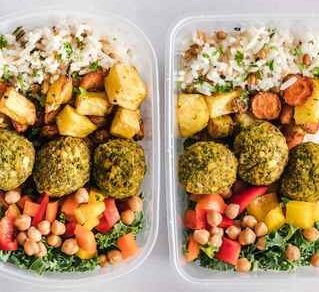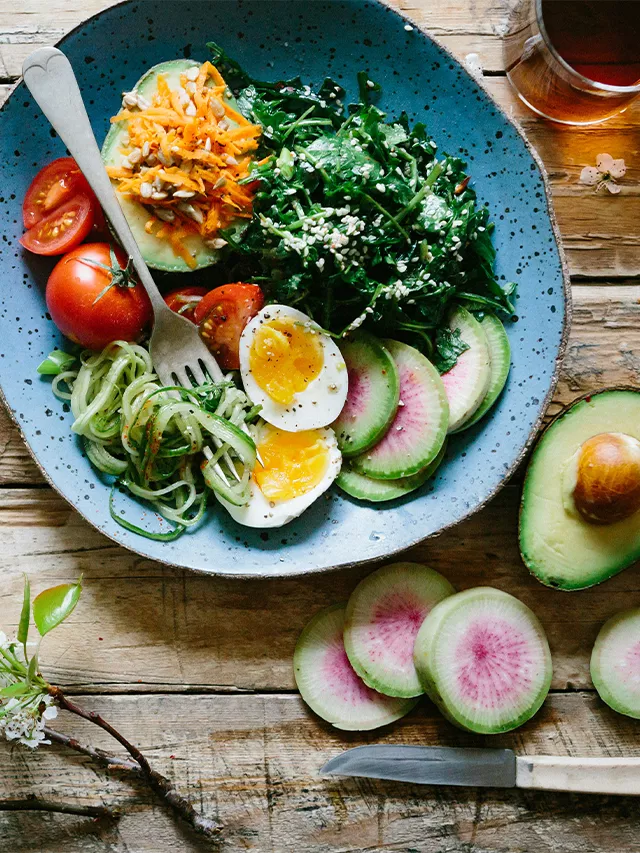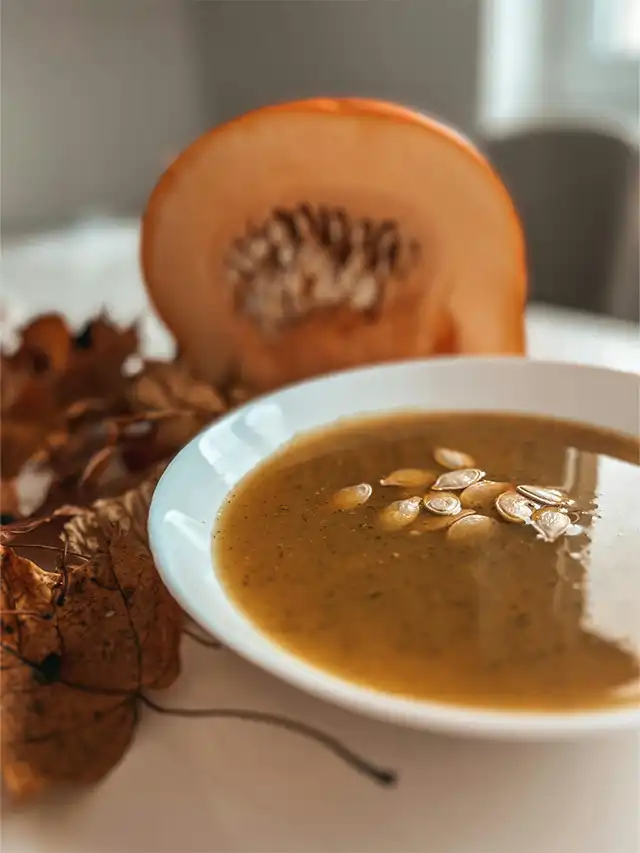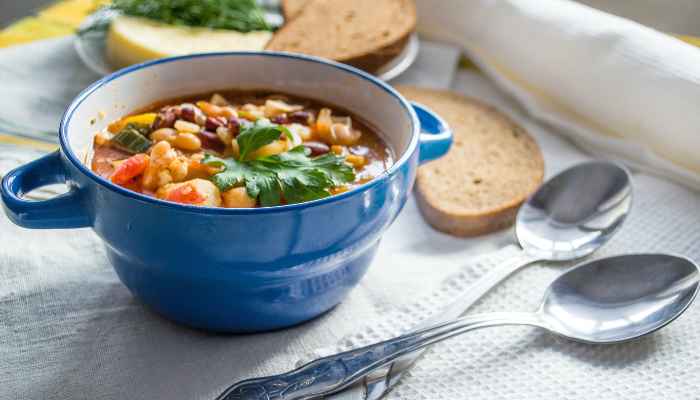Last Updated on March 28, 2025
There’s a common misconception that you need to eat meat and other animal products to reach your protein requirements. As it’s widely believed, meat is considered a major source of protein, but many plant foods are excellent sources of protein. You should know that if you choose not to consume meat, you can still get enough protein by eating plant foods. All it requires is a small bit of thought and planning. In fact, with the help of some high protein vegetarian recipes, you can easily get all the protein you need without eating meat.
Protein: What You Need to Know
Protein is an essential macronutrient needed by every cell in our bodies. It plays various roles from synthesis and repair of our muscles to structural and functional roles in enzymes, hormones, and antibodies. It even functions as an energy source.
Amino acids are the building blocks of proteins, and a total of 20 amino acids can be found in proteins. While some can be made by the body, others need to come from the food we eat.
The amount of protein you need depends on your gender, age, and activity levels. Approximately 15-25% of our diet should be from protein. The Recommended Dietary Allowance (which details the amounts of each nutrient you need to meet your basic nutritional requirements) for protein is 0.8 grams of protein per kilogram of body weight.
Proteins can be found in both animal and plant food. While the amino acid profile of animals is closer to that of humans, all the necessary amino acids can also be provided in the amounts needed from plant sources.
Plant Sources of Protein
Many different plant foods contain substantial amounts of protein. Below is a list of plant foods and their protein content per 100 grams (approximately 3.5 oz).
- Tempeh – 19g
- Hemp Seeds – 31.5g
- Tofu – 8g
- Lentils – 9g
- Edamame – 11g
- Quinoa – 14g
- Chickpeas – 9g
- Kidney Beans – 9g
- Soy Milk – 3.5g
- Black beans – 8g
- Nut Butter – 23g
It is best to spread these sources of plant protein throughout your day to meet your protein requirements if you don’t eat meat. This means consuming some at breakfast, lunch, dinner, and between meals with your snacks. Doing this allows for optimal protein uptake and muscle synthesis.
For example, if you were to consume:
- 300ml (approximately 1 ¼ cups) of soy milk with your breakfast
- 100g of chickpeas in your salad at lunch with a sprinkle of hemp seeds
- a tablespoon of nut butter on a snack with your morning coffee or tea
- 100g of edamame as a snack with your afternoon coffee or tea
- 100g of tempeh in a veggie stir fry served with ¾ cup of quinoa for dinner
you would already be meeting your protein requirements, and this is not even accounting for the smaller amounts of protein found in other plant-based foods.
Remember, plant-based protein supplements can be used to supplement (not replace) healthy eating. With that being said, they can be particularly beneficial when you are extra busy, traveling, have medical conditions, or if you have higher protein demands like some athletes. Here is some more information on the different protein supplements and when they can be most beneficial.
High Protein Vegetarian Recipes Without Meat
Here are four high protein vegetarian and vegan recipes you can incorporate into your diet to meet your protein requirements without eating meat.
High Protein Vegan Meatballs
These high-protein vegan meatballs combine lentils and high-protein grains to give an amazing protein punch! You can serve them with pasta, on a wrap, through a salad, or enjoy them by themselves as a high-protein snack.
Recipe: High Protein Vegan “Meat” balls
Makes approximately 16 balls
Ingredients:
- 1 large brown onion, diced
- 400g (approximately 14 oz) of tinned brown lentils, drained
- 1 cup mushrooms, washed and finely sliced
- 1 tbsp extra virgin olive oil
- ½ cup quinoa, cooked
- 1 zucchini, grated
- ½ cup plain rolled oats
- 1 garlic clove, crushed
- 3 tbsp chia seeds
- 1 tbsp sweet chili sauce
- 9 tbsp water
- 1 small chili, finely chopped
Directions:
- Preheat the oven to 175° C (350° F).
- Heat oil on the pan. Add onion, garlic, chili, and brown. Add mushrooms and lentils. Heat for a few minutes. Set aside.
- In a small bowl, mix chia and water. Set aside.
- In a large bowl, combine cooked lentils and onion mix, chia, quinoa, oats, zucchini, and chili sauce. After that, mix until combined well.
- Roll into balls with hands and place on an oiled baking tray.
- Finally, bake for approximately 10 minutes or until golden brown.
- Serve and enjoy!
High Protein Satay Tempeh (gluten-free)
This high-protein vegan meal is an excellent option for lunch or dinner. Made with tempeh, quinoa, and nuts, it provides a great protein hit along with fiber, vitamins, and minerals.
Recipe: High Protein Satay Tempeh
Makes 2 servings
Ingredients:
For the Tofu and Veggies:
- 250g (approximately 9 oz) firm tofu, cubed
- 2 cups baby spinach, shredded
- 1 red onion, diced
- 1/2 cup pumpkin, diced
- 1 tbsp sesame seed oil
- 2 tbsp black sesame seeds
- Sprinkle chili flakes
- 1 small lime, halved
- 1 cup of quinoa, cooked
For the Satay Sauce:
- 1/4 cup roasted, unsalted peanuts
- 1 tbsp sesame seed oil
- 1 lime, juiced
- 2 tbsp Tamari or soy sauce
Directions:
- Steam pumpkin. Remove from heat and place in a bowl.
- In a blender, combine satay ingredients. Remove and put aside.
- Next, heat sesame seed oil in a wok and cook the onion until translucent. Remove from pan.
- Add tofu to the pan and cook. Then, once cooked through, stir in satay sauce and coat.
- Remove tofu from the pan and place in a bowl with veggies. Sprinkle with sesame seeds, coconut & chili.
- Combine all ingredients and sprinkle with fresh lime juice.
- Serve and enjoy!
High Protein Black Bean Dip (gluten-free)
This bean dip is an excellent snack option to boost your protein intake without meat. Without a doubt, beans are a great source of protein that also have many other health benefits like fiber for a healthy gut.
Recipe: High Protein Black Bean Dip
Ingredients:
- 1 can of black beans, drained
- 1 tsp fresh diced chili
- 2 cloves garlic, crushed
- 1 tbsp extra virgin olive oil
- 5 cm (1 inch) ginger, grated
- 1 small lime, juiced
Directions:
- Heat oil on a frying pan and cook garlic, chili, and ginger. Add beans and cook for a few more minutes.
- Remove from heat and place into a high-speed blender. Next, add lime juice and blitz until smooth and well combined.
- Serve with some wholegrain crackers or veggie sticks and enjoy!
Plant Protein Breakfast Smoothie
This breakfast smoothie is a quick and easy option that you can drink on the go to boost your protein intake in the mornings. Additionally, it can make an excellent post-workout snack.
Recipe: Plant Protein Breakfast Smoothie
Makes 1 serving
Ingredients:
- 1 frozen banana
- 350ml (approximately 1 ½ cups) soy milk
- 2 tbsp hemp seeds
- ½ cup plain rolled oats
- 1 tbsp nut butter
- 1 tsp honey
Directions:
- First, place all ingredients into a blender. Next, blend until smooth.
- Finally, pour it into a cup. It’s ready to enjoy!
Conclusion
Protein plays a vital role in our bodies and is essential for our diets. Meat is a source of protein. However, many plant foods are excellent sources of protein, so you can meet your protein requirements without eating meat. By including some of the following:
- beans
- lentils
- soy products like tempeh or edamame
- nuts and high-protein grains like quinoa
in your diet, you can meet your protein requirements without eating meat. As you can see, it’s easier than you might think! But if you are unsure about whether you are meeting your protein needs, seek the advice of a dietitian.
Creating a Vegetarian Meal Plan to Stay Fit & Lose Weight
Plant-based diets are on the…
6 Healthy & Tasty Vegetarian Soups Recipes (Vegan Options Included)
Warm, comforting, and nourishing vegetarian…
6 Affordable Vegetarian Crock Pot Recipes for a Family or Group
Crock pots are a popular…
4 Easy Vegetarian Lunch Ideas for Work (with Recipes)
Who said that you couldn’t…
What can vegetarians eat in a day for high protein?
Protein-rich foods include tofu, beans, almonds, milk, cheese, and cheese. Veggie burgers, tempeh, and other meat alternatives are also options. Each serving of vegetables has 3 grams of protein. A protein supplement may be helpful if you have trouble getting enough protein from meals alone.
Is banana rich in protein?
Approximately 110 calories, 0 grams of fat, 1 gram of protein, 28 grams of carbohydrate, 15 grams of naturally occurring sugar, 3 grams of fiber, and 450 milligrams of potassium are included in one serving or one medium ripe banana.





